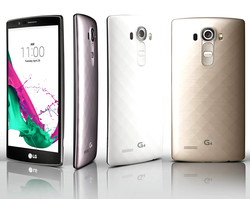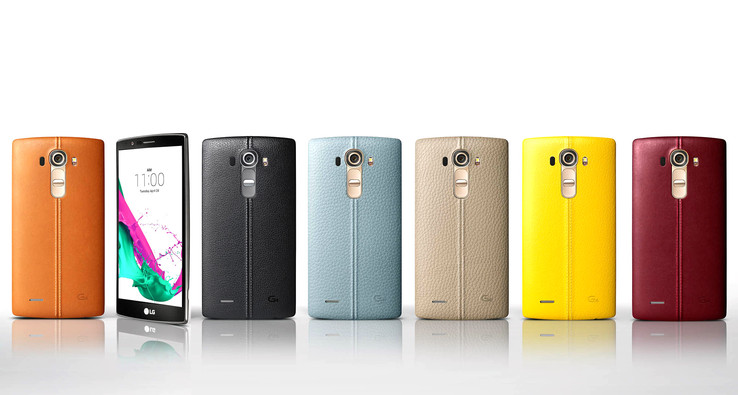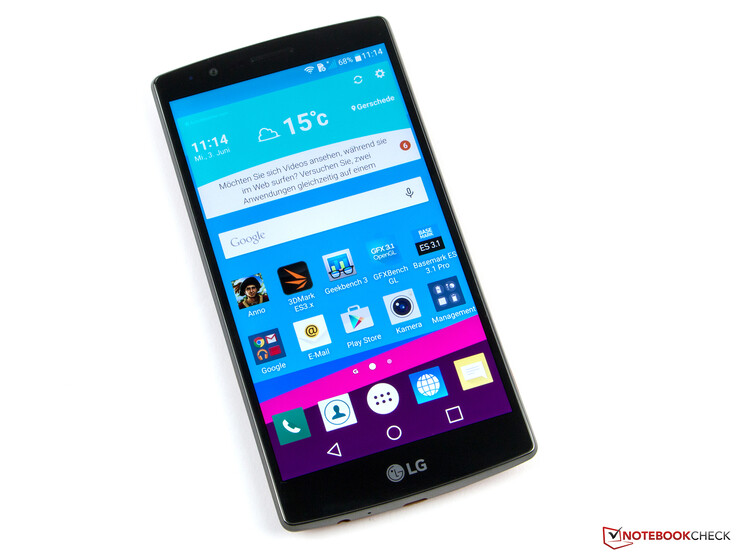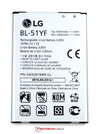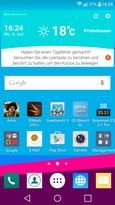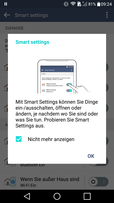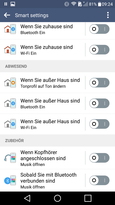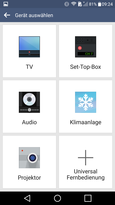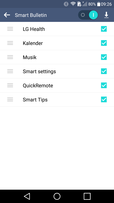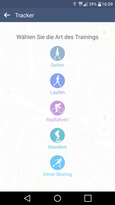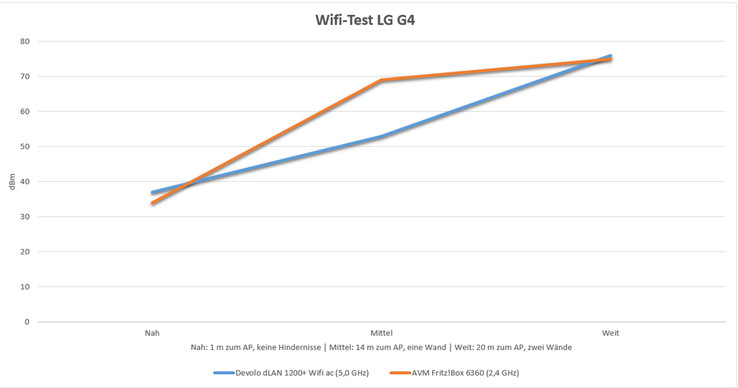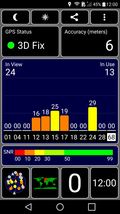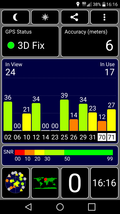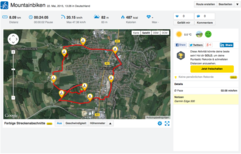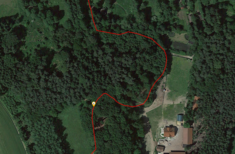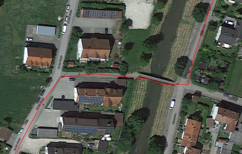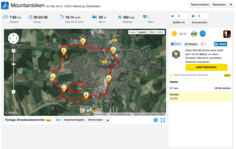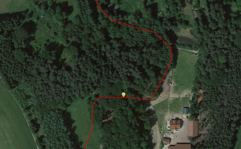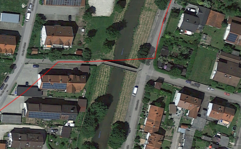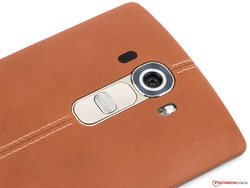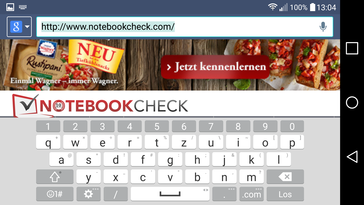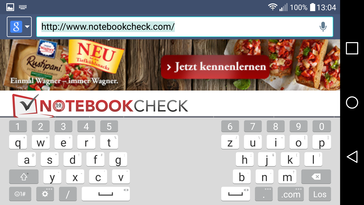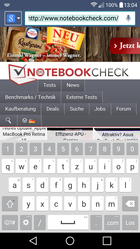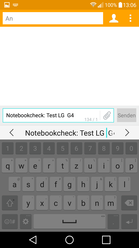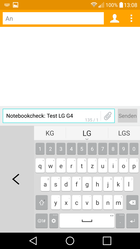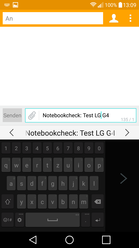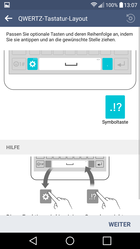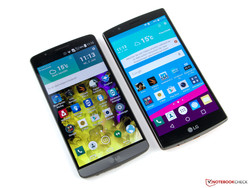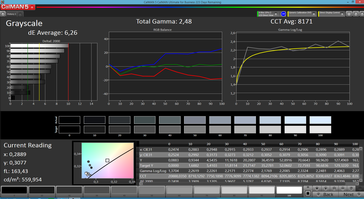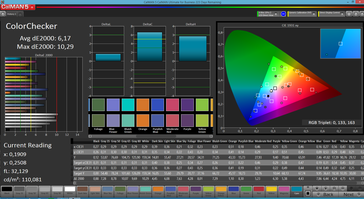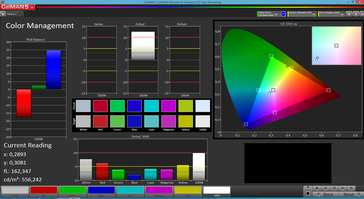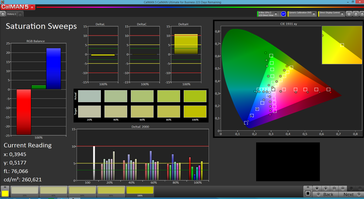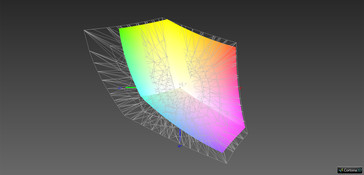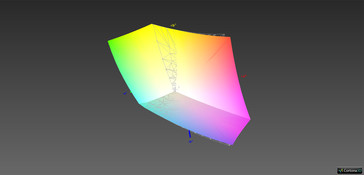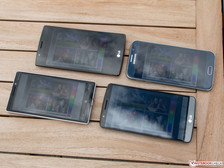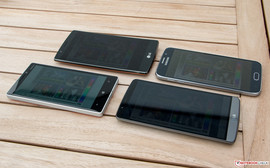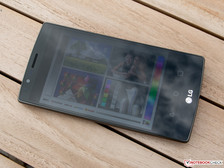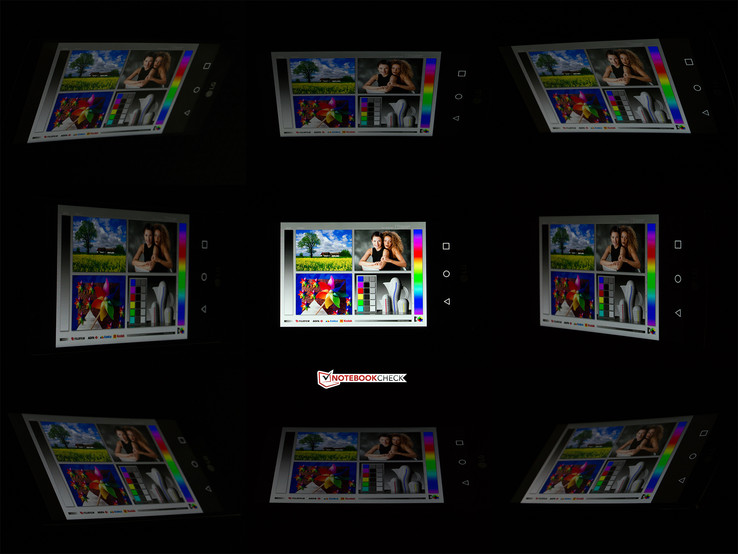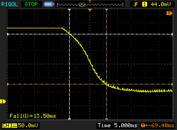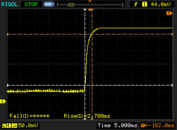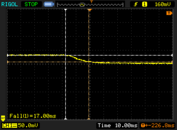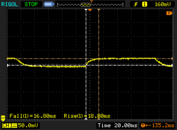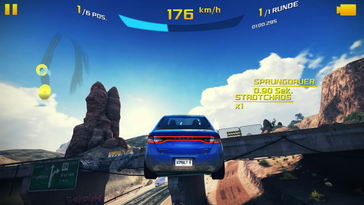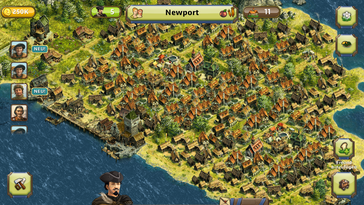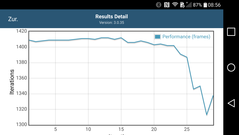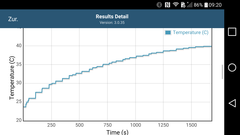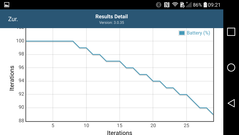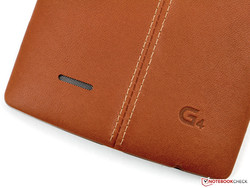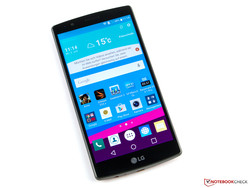LG G4 Smartphone Review

For the original German review, see here.
The former LG G3 was already a decent smartphone, although it had a few drawbacks for the user. The extreme heat development under the cover has to be emphasized here. Not only did it throttle the SoC, but also dimmed the screen. LG's Flex 2 has the same issue. We also found room for improvement in the screen's contrast and system performance.
LG's G4 has adopted many virtues. The battery can still be removed and the storage is still expandable. In addition, the Korean manufacturer does not rely on Qualcomm's latest top SoC, but uses the Snapdragon 808, which was quite impressive in the test. LG has also continued work on the camera, and has now installed one of the best lenses that can be currently found in a smartphone. The prices start at a comparatively low 649 Euros (~$728/RRP). The optional leather back costs 50 Euros (~$56) extra.
Competitors are found throughout the entire premium range. However, only the Moto X can hold a candle to the materials of LG's G4 with an optional leather or wooden back cover.
Case
With a height of 9.8 millimeters (~0.38 in), LG's G4 is not an ultra-slim smartphone like Samsung's Galaxy S6 (6.9 mm/~0.27 in) or Huawei's P8 (6.4 mm/~0.25 in). However, we have to note that the camera's protruding ring adds approximately 2 millimeters. Its rounded design makes it pleasant to hold. Like its precursor, the G4 is also one of the flagship models that have the largest screens measuring at 5.5 inches. The lateral rims look slightly narrower. On the other hand, the review sample is slightly larger on both the upper and lower edges.
The smartphone proves to be very resilient against pressure and warping, and does not display any distortions on the screen. The leather cover envelops the entire back of our review sample. The build, feel and even the smell are impressive. Unlike the Moto X, the leather backing is not inserted in the bezel, but is mounted on a flexible plastic cover. The leather is pulled and folded over the edge. Only the plastic guide pieces of the ports spoil the otherwise outstanding build impression. Although they are very stable, they look rather cheap. The gaps between the base and the back cover are quite visible due to the folded leather, but the spacing is very even.
The entire back of LG's G4 can be removed to enable accessing the exchangeable battery, Micro-SIM and Micro-SD slot. Both slots are simple trays without an eject mechanism. The NFC chip is also integrated into the back cover.
Connectivity
Unfortunately, the Micro-USB port in LG's G4 still supports only the 2.0 standard. MHL is not on-board either. However, Slim-Port support, which allows using an HDMI cable via an adapter, is installed. Wireless streaming of media via DLNA and Miracast is also possible. The interface supports OTG, making it possible to connect external input devices and storage devices to the smartphone.
The Micro-SD card slot accepts memory cards with a maximum capacity of 2 TB. However, this theoretical specification reflects the current limits of the SDXC standard. In fact, currently only cards with a maximum size of 200 GB exist. Models with up to 512 GB were presented at the Computex, but they are still far too expensive. App2SD functioned impeccably with the apps we tested.
NFC and the latest Bluetooth 4.1 standard and an infrared transmitter are all present. The latter allows controlling compatible projectors and air conditioners as well as the usual home cinema equipment.
Software
The manufacturer relies on Google's latest Android 5.1 Lollipop operating system, and covers it with its proprietary LG UX 4.0 user interface. It has been adapted to the new Material design, and no longer gives the quite trendy, colorful impression of LG's G3.
The preloaded third-party software is also limited to a minimum, and can be uninstalled when desired. The usual software, such as QuickMemo+ and Quick Remote, LG Backup and LG Health are preloaded. The latter is a simple fitness app that counts the user's paces and where the user can record personal data like weight. Different activities like hiking, walking, jogging, cycling or inline skating can be documented via the so-called Tracker.
Communication & GPS
LG's G4 is equipped with HSPA+ (max. upload: 5.76 Mbps; max. download: 42 Mbps) and LTE Cat. 6 (max. upload: 50 Mbps; max. download: 300 Mbps) for mobile data connections. The frequency bandwidth could be slightly wider. This is particularly important for people who often travel abroad. The G4 presents itself as adapted to the needs of each region. However, there will not be any problems within Europe.
The Wi-Fi module in the smartphone supports the IEEE 802.11 a/b/g/n/ac standards, and thus transmits in the 2.4 and 5.0 GHz frequency bands. The range is good and impressive. Even at a rather far distance from the access point, the device displayed an average connection quality. Although sometimes there were minor lags while streaming HD videos in the 2.4 GHz network, Internet browsing was still fast.
LG's G4 makes use of the GPS, GLONASS and BeiDou networks to determine positioning. Tracking took a moment outdoors, but was quite accurate. A little more time was needed indoors, but it also tracked our position accurately. The comparatively long localization time indicated poor outcomes in the comparison test.
LG's G4 had to compete with Garmin's Edge 500 bike navigation system. The latter presented a more accurate route tracking than the smartphone. LG's G4 was off-route on a narrow path as well as under difficult conditions in the woods. However, a total discrepancy of approximately four percent is still within a tolerable range.
Telephone & Voice Quality
The voice quality of LG's G4 is only mediocre. We have heard better quality even in considerably lower priced devices. The conversation is accompanied by a quiet crackling on both sides. In addition, short speech interruptions were noticed during several test calls. The speaker is useful in a quiet environment, but it is not good as a hands-free replacement.
Cameras
The front-facing camera of LG's G4 has a maximum resolution of 8 MP (2448x2364 pixels; 4:3). However, only 6 MP (1836x2264 pixels) is used in the default setting due to the 16:9 format. The resolution is reduced even more in photos with an edge length of 1:1 (2048x2048 pixels; 4.2 MP). Apart from the gesture control, familiar from LG's G3, there is also a mode that responds to spoken commands. Both can be used together well on a selfie stick. When the shutter release on the screen or on the back (volume down) is kept pressed, four pictures are taken in succession only a few seconds apart. Naturally, some retouching should be allowed and therefore, there is a ten-stage soft-focus effect. The image quality is still quite good even in dim light.
However, the highlight of LG's G4 is the primary camera on the rear. It has a maximum resolution of 15.9 MP (5312x2988 pixels; 16:9). Users who prefer the 4:3 format will have to be satisfied with 11.9 MP (3984x2988 pixels). The lens is supported by a laser autofocus, which has been further developed and is now able to focus even faster. In fact, it functioned quite fast, even in adverse light conditions, and is noticeably faster than the one in LG's G3 though not quite as fast as the one in the Galaxy S6.
The color spectrum sensor is a novelty. It measures the ambient light and optimizes the white point accordingly in order to ensure an ideal color reproduction. The new optical image stabilizer OIS 2.0 is also a progression, and stabilizes the device on three axes rather than only two that has been the case until now. In addition, it can now compensate a 2% tilt.
A manual mode is also included. It allows the user to set the white point, shutter speed (1/6000 - 30 seconds), light sensitivity (ISO 50 - 2700) and exposure time, and offers a histogram and the option of focusing manually. The latter will be very useful for nighttime shots because the laser autofocus loses accuracy over long distances and needs more time to focus. As in Huawei's P8, LG also touts the option of so-called light trail shots. While the feature is a much-simplified long-time exposure in the P8, it has to be set in the G4's manual mode as in conventional cameras. It is pleasing that the review sample also supports the DNG format, but unfortunately, it is only available in the manual mode.
The image quality of LG's G4 is on a very good. The sensor discloses a comparatively high dynamic range in daylight. Contrasts are depicted clearly, and barely any details are lost even in difficult light conditions. However, the large aperture (f/1.8) of the G4 decreases the focus visibly toward the edges. The colors look very vivid yet not unnatural. The camera had some problems when objects were too close. The autofocus needs a minimum distance of ten centimeters (~4 in) to do its job.
LG's G4 still presents good results in low light, and has the most natural color reproduction among the comparison devices. The focus is quite decent, although some care is needed because the big aperture has a visible impact on the depth of field. It decreases slightly away from the selected autofocus points, but beautiful pictures are nevertheless possible. LG's G4 really shows its prowess here, and achieves superb results in the comparison field (scene 3). While the pictures with the Galaxy S6 already look slightly muddy, those of the Lumia 930 are visibly sharper and even marginally better than those of the G4. On the other hand, the color balance of the review sample is clearly more homogeneous allowing it to take the best-looking low-light photo.
LG's G4 records videos at a maximum of Ultra-HD (4k, 3840x2160 pixels, 30 fps, 30 Mbps). Unfortunately, there is no HFR for Full HD recordings (1920x1080 pixels, 30 fps, 17 Mbps). The quality is slightly better in Full HD. While there are barely any visible differences in daylight, the image noise in Ultra-HD videos increases when the light decreases. However, the video quality can be called good. Sound is recorded in stereo, and is accompanied by a quite audible noise in quiet surroundings. Slow motion videos can also be recorded with up to 120 frames per second, but unfortunately only in the small HD resolution (1280x720 pixels).
Accessories & Warranty
LG's G4 was shipped to us with only a modular power supply and a USB data cable. Apparently, a headset will be included in the retail version's box, as well as a second plastic cover for the leather model.
The manufacturer includes a 24-month warranty on its product, which cannot be upgraded.
Input Devices & Handling
LG has fine-tuned the input options only marginally compared to the former G3. The capacitive touchscreen has a very sleek surface, which is responsive even in its corners. Inputs are implemented quickly and accurately, from which the virtual keyboard also benefits.
The keyboard layout of LG's G4 is largely unchanged. Although the keys look quite small, they are suitable for typing. Users who hold the smartphone in landscape mode can split the input area by simply pulling them apart. This makes it possible to type quickly with both thumbs. There is a novelty: When the space bar is held down, the word suggestion bar is moved to a separate input row where the cursor can be placed more easily for corrections. Swipe inputs are also supported when desired, but have to be enabled in the settings first. The keyboard includes multiple colored skins. There is also a downsized keyboard for one-handed use.
LG also maintains the rear-key design in the G4, which banishes the volume rocker and power button to the back. LG users will be familiar with this, but newcomers will need time to get used to it. The volume rocker has been mapped with additional features: QuickMemo+ opens when double tapping volume up. Double tapping volume down opens the camera app. It is possible to either take a snapshot directly after opening the latter or do it by tapping the button again. This is quite handy for selfies, but needs a bit of wrist bending when using the primary camera.
Display
Like the precursor, LG's G4 has a 5.5-inch screen with a generous resolution of 2560x1440 pixels. This equals to an aspect ratio of 16:9 and a pixel density of crisp 534 ppi. A direct comparison between the review sample and LG's G3 makes it obvious that both the brightness and contrast have been improved, which was quite necessary. The screen is slightly curved, but not as acutely as in the Flex 2.
We examined the screen luminosity with the photospectrometer and ascertained a brightness of up to 566 cd/m² in the Quantum IPS panel of the G4. This is a very good value, and the illumination of 90% is very homogeneous. The G3 only managed 417 cd/m², which is an increase of approximately 36%. The Galaxy S6 Edge can even reach over 600 cd/m² when the brightness sensor is enabled. None of the competitors shine as bright as the G4; only Sony's Xperia Z3 (max. 702 cd/m²; 90%) is brighter.
We did not observe any screen bleeding in our review sample.
| |||||||||||||||||||||||||
Brightness Distribution: 90 %
Center on Battery: 566 cd/m²
Contrast: 1204:1 (Black: 0.47 cd/m²)
ΔE ColorChecker Calman: 6.17 | ∀{0.5-29.43 Ø4.78}
ΔE Greyscale Calman: 6.26 | ∀{0.09-98 Ø5}
98.63% sRGB (Argyll 1.6.3 3D)
65.48% AdobeRGB 1998 (Argyll 1.6.3 3D)
Gamma: 2.48
CCT: 8171 K
| LG G4 Adreno 418, 808 MSM8992, 32 GB eMMC Flash | LG G3 Adreno 330, 801 MSM8974AC, 16 GB eMMC Flash | OnePlus One Adreno 330, 801 MSM8974AC, 64 GB eMMC Flash | Apple iPhone 6 Plus PowerVR GX6450, A8, 64 GB eMMC Flash | Samsung Galaxy S6 Edge Mali-T760 MP8, Exynos 7420, 32 GB UFS 2.0 Flash | HTC One M9 Adreno 430, 810 MSM8994, 32 GB eMMC Flash | Huawei P8 Mali-T628 MP4, Kirin 930, 16 GB eMMC Flash | Nokia Lumia 930 Adreno 330, 800 MSM8974, 32 GB eMMC Flash | |
|---|---|---|---|---|---|---|---|---|
| Screen | -27% | -17% | 1% | 15% | -5% | 11% | -42% | |
| Brightness middle (cd/m²) | 566 | 417 -26% | 423 -25% | 519 -8% | 343 -39% | 474 -16% | 453 -20% | 275 -51% |
| Brightness (cd/m²) | 536 | 395 -26% | 408 -24% | 496 -7% | 338 -37% | 458 -15% | 439 -18% | 278 -48% |
| Brightness Distribution (%) | 90 | 89 -1% | 83 -8% | 90 0% | 94 4% | 85 -6% | 91 1% | 89 -1% |
| Black Level * (cd/m²) | 0.47 | 0.96 -104% | 0.54 -15% | 0.62 -32% | 0.4 15% | 0.28 40% | ||
| Contrast (:1) | 1204 | 434 -64% | 783 -35% | 837 -30% | 1185 -2% | 1618 34% | ||
| Colorchecker dE 2000 * | 6.17 | 5.67 8% | 5.56 10% | 3.67 41% | 2.2 64% | 6.32 -2% | 4.7 24% | 10.99 -78% |
| Greyscale dE 2000 * | 6.26 | 5.66 10% | 7.55 -21% | 3.78 40% | 2.37 62% | 6.36 -2% | 5.03 20% | 8.29 -32% |
| Gamma | 2.48 89% | 2.53 87% | 2.33 94% | 2.42 91% | 2.41 91% | 2.43 91% | 2.27 97% | 2.16 102% |
| CCT | 8171 80% | 7741 84% | 7624 85% | 7327 89% | 6425 101% | 8218 79% | 7439 87% | 6731 97% |
| Color Space (Percent of AdobeRGB 1998) (%) | 65.48 | 59 -10% | 87.77 34% | 58.81 -10% | 72.04 10% | |||
| Color Space (Percent of sRGB) (%) | 98.63 |
* ... smaller is better
The black level of LG's G4 has also been reduced to 0.47 cd/m². This, combined with the high brightness leads to an outstanding contrast ratio that is only surpassed by devices based on OLED screens and Huawei's P8.
LG's G4 is not quite as supreme in color reproduction. It is even slightly worse than its precursor. Primarily the grayscale levels are its weak point where the smartphone's screen has a DeltaE of up to 10 making a bluish cast visible and giving the image a slightly cool impression. The shifts are not quite as serious in the mixed colors, and do not exceed a DeltaE of 8.3. The colors are also slightly oversaturated. Although this is not distracting in practice, conclusions about the color accuracy of photos should not be made just based on the screen. We would have expected better rates from a premium smartphone.
LG has also taken a big step forward in terms of color space coverage. The manufacturer follows the Digital Cinema Initiatives color space (DCI), which is to be covered by almost 100% and is larger than the sRGB color space. Unfortunately, we could not check this due to the lack of the comparison profile. The sRGB only covers that of the DCI by 80%. The real sRGB color space coverage of over 98% is on a very good level. The G4 is defeated by the Galaxy S6 Edge (88%) and Huawei P8 (72%) only in the larger AdobeRGB. Nevertheless, LG's G4 has one of the best screens that can be currently found in a smartphone.
LG's G4 also makes a good impression in outdoor use. Thanks to the high brightness and superb contrast ratio, content is legible even in bright surroundings. Only the glossy screen might thwart this in some cases. The smartphone cannot quite match the outdoor qualities of the Galaxy S6 or Lumia 930.
A negative aspect is that the smartphone automatically dims its screen in warmer environments and under prolonged use to prevent overheating. This effect is familiar from LG's G3 and Flex 2, but it is not as extreme in the G4. Nevertheless, this is especially aggravating when it happens in the outdoors because the screen's brightness drops to 325 cd/m² (80%). This occurs especially during games, UHD videos and prolonged browsing sessions.
The viewing angle stability of the Quantum IPS screen in LG's G4 is very good and does not give reason for complaint. The color fidelity remains stable and the brightness decreases slightly even in extremely flat angles. Only reflections on the glass panel might prove annoying here.
With our Rigol DS1052E oscilloscope we looked at response times of the display. Black to white took 2.7 ms, white to black needed a longer period of 13.5 ms. That leads to a response time of about 16.1 ms in our test. From 50 to 80 & grey, the display needed 18.8 ms (rise) and 17 ms (fall) - resulting in 35.8 ms. PWM modulation was not visible in reduced brightness settings.
Performance
As mentioned before, LG does not use the latest top SoC from Qualcomm, but has installed the smaller Snapdragon 808 MSM8992 model instead. It is a 64-bit hexa-core processor that operates in the Big.LITTLE design and, like the Snapdragon 810, has four weaker Cortex A53 cores, but only two of the fast Cortex A57 cores, which can clock at up to 2.0 GHz nominally. However, the clock frequency of the version LG has installed is limited to 1.8 GHz. 3 GB of working memory supports the system.
LG's plan to use the smaller model seems to work because the SoC makes a very good impression in processor performance and outclasses the older flagship models. As expected, the performance is not a match for up-to-date devices. For example, both the HTC One M9 (Snapdragon 810) and the Galaxy S6 Edge (Exynos 7420) present a higher performance in some cases. They are up to 73% faster in LINPAC. This looks similar in the CPU test of PassMark although the difference is slightly smaller.
The overall performance is more significant at this point, and LG's G4 scores quite well and achieves almost 50000 points in AnTuTu v5. The review sample is even faster than the One M9 in PCMark for Android. Although the other flagships are faster, Huawei's P8 (Kirin 930) has proved that a fast SoC is not everything. The subjective system performance of LG's G4 has also improved noticeably, but LG's UI is not completely lag-free.
| Smartbench 2012 | |
| Productivity Index (sort by value) | |
| LG G4 | |
| LG G3 | |
| OnePlus One | |
| HTC One M9 | |
| Samsung Galaxy S6 Edge | |
| Google Nexus 6 | |
| Huawei P8 | |
| Gaming Index (sort by value) | |
| LG G4 | |
| LG G3 | |
| OnePlus One | |
| HTC One M9 | |
| Samsung Galaxy S6 Edge | |
| Google Nexus 6 | |
| Huawei P8 | |
| Geekbench 3 | |
| 64 Bit Single-Core Score (sort by value) | |
| LG G4 | |
| HTC One M9 | |
| Samsung Galaxy S6 Edge | |
| Huawei P8 | |
| 64 Bit Multi-Core Score (sort by value) | |
| LG G4 | |
| HTC One M9 | |
| Samsung Galaxy S6 Edge | |
| Huawei P8 | |
| PCMark for Android - Work performance score (sort by value) | |
| LG G4 | |
| LG G3 | |
| LG G3 | |
| OnePlus One | |
| HTC One M9 | |
| Samsung Galaxy S6 Edge | |
| Huawei P8 | |
| AnTuTu v5 - Total Score (sort by value) | |
| LG G4 | |
| LG G3 | |
| OnePlus One | |
| HTC One M9 | |
| Samsung Galaxy S6 Edge | |
| Sony Xperia Z3 | |
| Google Nexus 6 | |
| Apple iPhone 6 Plus | |
| Huawei P8 | |
The SoC in LG's G4 integrates a Qualcomm Adreno 418 graphics unit. The GPU clocks at up to 600 MHz and supports graphics APIs like OpenGL ES 3.1, OpenCL 1.2 and DirectX 11.2 as well as other hardware tessellations. The graphics unit's performance is positioned between an Adreno 330 and 420, and thus has plenty of power.
The excellence of the Adreno 418 is confirmed in the benchmarks. However, it cannot keep up with current top GPUs.
| 3DMark | |
| 1280x720 offscreen Ice Storm Unlimited Score (sort by value) | |
| LG G4 | |
| LG G3 | |
| OnePlus One | |
| HTC One M9 | |
| Samsung Galaxy S6 Edge | |
| Sony Xperia Z3 | |
| Google Nexus 6 | |
| Apple iPhone 6 Plus | |
| Huawei P8 | |
| 1280x720 offscreen Ice Storm Unlimited Graphics Score (sort by value) | |
| LG G4 | |
| LG G3 | |
| OnePlus One | |
| HTC One M9 | |
| Samsung Galaxy S6 Edge | |
| Sony Xperia Z3 | |
| Google Nexus 6 | |
| Apple iPhone 6 Plus | |
| Huawei P8 | |
| 1280x720 offscreen Ice Storm Unlimited Physics (sort by value) | |
| LG G4 | |
| LG G3 | |
| OnePlus One | |
| HTC One M9 | |
| Samsung Galaxy S6 Edge | |
| Sony Xperia Z3 | |
| Google Nexus 6 | |
| Apple iPhone 6 Plus | |
| Huawei P8 | |
| 2560x1440 Sling Shot OpenGL ES 3.0 (sort by value) | |
| LG G4 | |
| LG G3 | |
| HTC One M9 | |
| Samsung Galaxy S6 Edge | |
| 2560x1440 Sling Shot Extreme (ES 3.1) (sort by value) | |
| LG G4 | |
| HTC One M9 | |
| Samsung Galaxy S6 Edge | |
| GFXBench (DX / GLBenchmark) 2.7 | |
| T-Rex Onscreen (sort by value) | |
| LG G4 | |
| LG G3 | |
| OnePlus One | |
| Nokia Lumia 930 | |
| HTC One M9 | |
| Samsung Galaxy S6 Edge | |
| Sony Xperia Z3 | |
| Google Nexus 6 | |
| Apple iPhone 6 Plus | |
| Huawei P8 | |
| 1920x1080 T-Rex Offscreen (sort by value) | |
| LG G4 | |
| LG G3 | |
| OnePlus One | |
| Nokia Lumia 930 | |
| HTC One M9 | |
| Samsung Galaxy S6 Edge | |
| Sony Xperia Z3 | |
| Google Nexus 6 | |
| Apple iPhone 6 Plus | |
| Huawei P8 | |
| GFXBench 3.0 | |
| on screen Manhattan Onscreen OGL (sort by value) | |
| LG G4 | |
| LG G3 | |
| OnePlus One | |
| HTC One M9 | |
| Samsung Galaxy S6 Edge | |
| Sony Xperia Z3 | |
| Google Nexus 6 | |
| Apple iPhone 6 Plus | |
| Huawei P8 | |
| 1920x1080 1080p Manhattan Offscreen (sort by value) | |
| LG G4 | |
| LG G3 | |
| OnePlus One | |
| HTC One M9 | |
| Samsung Galaxy S6 Edge | |
| Sony Xperia Z3 | |
| Google Nexus 6 | |
| Apple iPhone 6 Plus | |
| Huawei P8 | |
| GFXBench 3.1 | |
| on screen Manhattan ES 3.1 Onscreen (sort by value) | |
| LG G4 | |
| HTC One M9 | |
| Samsung Galaxy S6 Edge | |
| 1920x1080 Manhattan ES 3.1 Offscreen (sort by value) | |
| LG G4 | |
| HTC One M9 | |
| Samsung Galaxy S6 Edge | |
| Lightmark - 1920x1080 1080p (sort by value) | |
| LG G4 | |
| LG G3 | |
| OnePlus One | |
| HTC One M9 | |
| Samsung Galaxy S6 Edge | |
| Epic Citadel - Ultra High Quality (sort by value) | |
| LG G4 | |
| LG G3 | |
| OnePlus One | |
| HTC One M9 | |
| Samsung Galaxy S6 Edge | |
| Sony Xperia Z3 | |
| Huawei P8 | |
Internet browsing is subjectively fast, and LG's G4 can also impress in the benchmarks. The preloaded Stock Android Browser is slightly faster than Google's Chrome. The smartphone is always up front in the comparison field, and is usually only surpassed by the iPhone 6 Plus or Galaxy S6 Edge.
| Octane V2 - Total Score (sort by value) | |
| LG G4 | |
| LG G3 | |
| LG G3 | |
| Nokia Lumia 930 | |
| HTC One M9 | |
| Samsung Galaxy S6 Edge | |
| Sony Xperia Z3 | |
| Google Nexus 6 | |
| Apple iPhone 6 Plus | |
| Huawei P8 | |
| Sunspider - 1.0 Total Score (sort by value) | |
| LG G4 | |
| LG G3 | |
| LG G3 | |
| OnePlus One | |
| Nokia Lumia 930 | |
| HTC One M9 | |
| Samsung Galaxy S6 Edge | |
| Sony Xperia Z3 | |
| Google Nexus 6 | |
| Apple iPhone 6 Plus | |
| Huawei P8 | |
| Mozilla Kraken 1.1 - Total (sort by value) | |
| LG G4 | |
| LG G3 | |
| LG G3 | |
| OnePlus One | |
| Nokia Lumia 930 | |
| HTC One M9 | |
| Samsung Galaxy S6 Edge | |
| Sony Xperia Z3 | |
| Google Nexus 6 | |
| Apple iPhone 6 Plus | |
| Huawei P8 | |
| Peacekeeper - --- (sort by value) | |
| LG G4 | |
| LG G3 | |
| OnePlus One | |
| Nokia Lumia 930 | |
| HTC One M9 | |
| Samsung Galaxy S6 Edge | |
| Sony Xperia Z3 | |
| Apple iPhone 6 Plus | |
| Huawei P8 | |
| Browsermark - 2.1 (sort by value) | |
| LG G4 | |
| LG G3 | |
| LG G3 | |
| OnePlus One | |
| Nokia Lumia 930 | |
| HTC One M9 | |
| Samsung Galaxy S6 Edge | |
| Huawei P8 | |
| Google V8 Ver. 7 - Google V8 Ver. 7 Score (sort by value) | |
| LG G4 | |
| LG G3 | |
| OnePlus One | |
| HTC One M9 | |
| Samsung Galaxy S6 Edge | |
| Google Nexus 6 | |
| Apple iPhone 6 Plus | |
| Huawei P8 | |
| BaseMark OS II - Web (sort by value) | |
| LG G4 | |
| LG G3 | |
| OnePlus One | |
| Nokia Lumia 930 | |
| HTC One M9 | |
| Samsung Galaxy S6 Edge | |
| Google Nexus 6 | |
| Apple iPhone 6 Plus | |
| Huawei P8 | |
| Vellamo 3.x - Browser (sort by value) | |
| LG G4 | |
| LG G3 | |
| LG G3 | |
| OnePlus One | |
| HTC One M9 | |
| Samsung Galaxy S6 Edge | |
| Sony Xperia Z3 | |
| Google Nexus 6 | |
| Huawei P8 | |
* ... smaller is better
LG's G4 has a 32 GB eMMC flash memory, and the user has approximately 22 GB of that available. The storage can be expanded via a Micro-SD card should it be needed. The slot supports all common formats of this standard, which allowed us to expand it to 200 GB at the time of testing.
The internal storage is very fast. The G4 is equipped with the fastest eMMC memory currently available in a smartphone and OnePlus' One outperforms it only in sequential writing of data. The Galaxy S6 that is based on UFS 2.0 storage is currently out of reach.
| BaseMark OS II - Memory (sort by value) | |
| LG G4 | |
| LG G3 | |
| OnePlus One | |
| Nokia Lumia 930 | |
| HTC One M9 | |
| Samsung Galaxy S6 Edge | |
| Google Nexus 6 | |
| Apple iPhone 6 Plus | |
| Huawei P8 | |
| PassMark PerformanceTest Mobile V1 | |
| Disk Tests (sort by value) | |
| LG G4 | |
| LG G3 | |
| HTC One M9 | |
| Samsung Galaxy S6 Edge | |
| Sony Xperia Z3 | |
| Google Nexus 6 | |
| Apple iPhone 6 Plus | |
| Huawei P8 | |
| Memory Tests (sort by value) | |
| LG G4 | |
| LG G3 | |
| HTC One M9 | |
| Samsung Galaxy S6 Edge | |
| Sony Xperia Z3 | |
| Google Nexus 6 | |
| Apple iPhone 6 Plus | |
| Huawei P8 | |
Games
Although the integrated Qualcomm Adreno 418 in LG's G4 is not a high-end GPU, it still offers a very high performance and supports all common graphic interfaces. We did not have problems in any of the tested games, regardless of whether they were more graphically demanding ones like “Asphalt 8” or “Anno”. The games ran in their full glory without any annoying lags.
The very good touchscreen and the impeccably working sensors make LG's G4 a compact gaming console on the go.
Emissions
Temperature
LG's G4 reached a maximum of 36.2 °C (~97 °F) on its surface while idling, which is already lukewarm. The rates climb up to 44.3 °C (~112 °F) under load. Although this is quite warm, it is not critical. Only the Lumia 930 gets slightly warmer with up to 48.8 °C (~120 °F) in the comparison field.
The SoC in LG's G4 underwent the stress test using the battery test of GFXBench 3.0. The T-Rex test runs thirty times in succession and records the behavior of both CPU and GPU beside the battery status. The review sample was stable for quite some time. The frame rates first dropped slightly after the twentieth run until they dropped more significantly after the 25th time. However, the performance loss of approximately 10% is still within limits.
The automatic dimming should be again mentioned at this point. Since this only applies to smartphones from LG with QHD screens, it is most likely that the screens themselves get too warm, and other components like the SoC are not the reason.
(±) The maximum temperature on the upper side is 43.8 °C / 111 F, compared to the average of 35.2 °C / 95 F, ranging from 21.9 to 247 °C for the class Smartphone.
(±) The bottom heats up to a maximum of 44.3 °C / 112 F, compared to the average of 34 °C / 93 F
(±) In idle usage, the average temperature for the upper side is 32 °C / 90 F, compared to the device average of 32.9 °C / 91 F.
Speaker
The speaker in LG's G4 is not ideally positioned; it will usually be covered by the hand when held in portrait mode. However, this barely reduces the quality. The smartphone's curved back allows placing it on a table without influencing the sound properties.
Trebles are mostly transmitted clearly and the overall sound is quite decent. However, the sound echoes heavily in music playback when the volume of the G4 is pushed over 50%. This effect is not as prominent during videos or games.
Sound output via the 3.5 mm audio jack is beyond reproach seen purely subjectively, and it leaves an impeccable impression.
Energy Management
Power Consumption
The idle power consumption of LG's G4 is quite high. The smartphone still consumes relatively exorbitant 1.1 watts even when using minimum screen brightness (4 cd/m²). The other consumption rates have been improved compared with the former G3. This is noticed particularly during load when the G4 requires only 8.8 watts. Nevertheless, this is still quite high compared with the competition. HTC's One M9 that is equipped with a stronger SoC consumes less power under load.
The included power supply has a nominal power of 9 watts (5 volts, 1.8 ampere), which is rather tight. The smartphone also supports Quick Charge.
| Off / Standby | |
| Idle | |
| Load |
|
Key:
min: | |
Battery Runtime
The battery in LG's G4 has an abundant 3000 mAh that, however, does not let us hope for a big advantage considering the consumption rates. This presumption is unfortunately confirmed in the runtime tests. The battery is depleted quite fast, especially under load.
The tests using a brightness set to 150 cd/m² provide the best comparison basis. LG's G4 did not even last for five and a half hours in the Wi-Fi test, which is a below average rate. The review sample is in the midfield in the video runtime test. Only the Reader's test performed with minimum screen brightness delivered convincing results.
Overall, the G4 is better than its precursor, but it is the taillight in the high-end sector. However, the offered battery runtime will be enough for a day in most cases. Anyone who uses the camera a lot and likes to play the occasional game should think about an external backup battery.
| LG G4 Adreno 418, 808 MSM8992, 32 GB eMMC Flash | LG G3 Adreno 330, 801 MSM8974AC, 16 GB eMMC Flash | Sony Xperia Z3 Adreno 330, 801 MSM8974AC, 16 GB eMMC Flash | Google Nexus 6 Adreno 420, 805 APQ8084, 32 GB eMMC Flash | HTC One M9 Adreno 430, 810 MSM8994, 32 GB eMMC Flash | Samsung Galaxy S6 Edge Mali-T760 MP8, Exynos 7420, 32 GB UFS 2.0 Flash | Apple iPhone 6 Plus PowerVR GX6450, A8, 64 GB eMMC Flash | Nokia Lumia 930 Adreno 330, 800 MSM8974, 32 GB eMMC Flash | |
|---|---|---|---|---|---|---|---|---|
| Battery runtime | -3% | 8% | 7% | 11% | 31% | 32% | 19% | |
| Reader / Idle (h) | 27.6 | 14.2 -49% | 20.1 -27% | 19.2 -30% | 13.4 -51% | 22.5 -18% | 23.9 -13% | 23.1 -16% |
| H.264 (h) | 8.4 | 4.6 -45% | 11.4 36% | 10.9 30% | 7 -17% | 7 -17% | 11.3 35% | |
| WiFi v1.3 (h) | 5.4 | 5.8 7% | 8.9 65% | |||||
| Load (h) | 1.9 | 3.5 84% | 2.2 16% | 2.3 21% | 3.9 105% | 3.7 95% | 3.3 74% | 2.9 53% |
| WiFi (h) | 7.5 | 11.2 | 10 | 9.6 | 13 | 16.7 |
Pros
Cons
Verdict
LG has developed a good premium smartphone with its G4. Opting for the somewhat weaker Snapdragon 808 cannot be criticized. Quite the contrary: The smaller model of the Snapdragon 810 makes a very good impression. The device also convinces with one of the best cameras currently found in a smartphone. We even liked the front-facing camera. In addition, the leather version of the device is simply exquisite, and is compelling in both feel and smell.
Elegant design meets first-rate camera and makes LG's G4 a real eye-catcher in many respects.
We think there is still room for improvement in the smartphone's temperature development. Although the screen does not automatically dim quite as fast as in the G3 to prevent overheating, it is aggravating. Furthermore, LG's UI still does not run absolutely smoothly, which is definitely not due to the SoC's performance seeing that Huawei's P8 does a much better job despite slightly weaker components. We would have also expected a better voice quality from a high-end smartphone. The occasional speech dropouts are especially annoying.
Nevertheless, LG's G4 is one of the best smartphones that can be currently bought. The screen and connectivity are first rate and its storage can be expanded at little cost thanks to the Micro-SD slot.
LG G4
- 04/13/2016 v5 (old)
Daniel Schmidt




